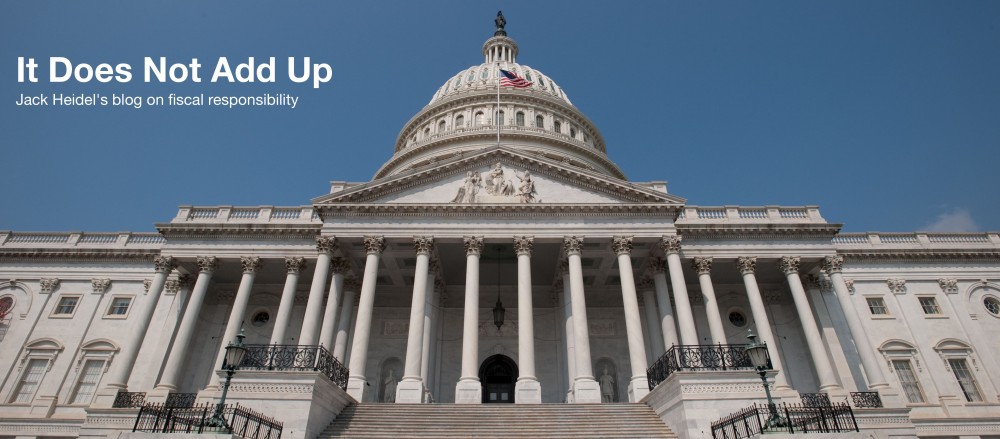“I could end the deficit in 5 minutes. You just pass a law that says anytime there is a deficit of more than 3% of GDP, all sitting members of Congress are ineligible for re-election.” Warren Buffett, 1930 –
Mr. Buffett made this quip in a recent interview with CNBC. Since the economy has historically grown at a rate of about 3%, Mr. Buffett is saying that we’ll be alright as long as economic growth exceeds deficit spending. This is generally correct but, as Mr. Buffett well knows, the situation is more complicated than this.
 A very good, and nontechnical, discussion of this whole subject can be found in the newly published book, “The Death of Money: the coming collapse of the international monetary system” by the financier James Rickards. Look at Chapter 7, “Debt, Deficits and the Dollar.”
A very good, and nontechnical, discussion of this whole subject can be found in the newly published book, “The Death of Money: the coming collapse of the international monetary system” by the financier James Rickards. Look at Chapter 7, “Debt, Deficits and the Dollar.”
Simplifying Mr. Rickards’ approach a little bit, and keeping it in Mr. Buffett’s framework, for a stable economy we need to have
G > D
where the nominal growth G = real GDP + I (I is the rate of inflation) and the deficit D = S – T (S is spending and T is tax revenue). I have included interest paid on the debt as part of total spending. As long as the left hand side is greater than the right hand side, the economy is growing faster than the deficit and the accumulated debt will shrink as a percentage of GDP. Notice that the rate of inflation affects the left hand side of the inequality while the interest rate is part of the right hand side.
Negative inflation is deflation which is clearly undesirable. The Federal Reserve’s current target for inflation is 2%. The challenge for the Fed is 1) to keep inflation high enough and interest rates low enough so that G > D, while at the same time, 2) to make sure that inflation does not grow so high as to destabilize the markets.
Given our underperforming economy with low real GDP growth, and huge deficits, Mr. Rickards is pessimistic that the Fed can continue successfully “in the position of a tightrope walker with no net … exuding confidence while having no idea whether its policies will work or when they might end.”
Thus the gloomy title for his book.

Wow– you’ve gone beyond presenting just numbers and actually present a model! Nice!
However, what makes you think this model is better than any others? This guy’s model and analysis are quite outside the mainstream of economics and in the realm of goldbugs, bitcoins, and conspiracy theories:
http://www.ft.com/cms/s/2/b0c92908-bb3b-11e3-948c-00144feabdc0.html#axzz3ACTIJ2Nu
These types have been predicting hyper inflation, the collapse of the dollar, the rise of gold, and world-wide turmoil for years. In fact, Rickards had a book in 2011 predicting all these disasters:
http://www.ft.com/intl/cms/s/2/d761be04-0a3a-11e1-92b5-00144feabdc0.html#axzz3ACTIJ2Nu
It’s 2014; how’d the predictions come out? Not so good, huh? So why listen to him now? He’s not even an economist– he’s just another deficit scold/hard money crank who’s been completely wrong in everything he’s predicted so far.
Good that you’ve put forth a model, but I wouldn’t put too much faith in this guy’s model.
The Rickards book has a good discussion of the so-called BRITS model for:
B = borrowing costs
R = real output
I = inflation
T = taxes
S = spending
BRITS is a generalization of the simple “Buffett” G > D model which I discuss above. The more general model includes the influence of both inflation I and interest rates B which helps to understand the wide scope of the model and especially the role of the Federal Reserve which can heavily influence both I and B.
Although I focus on fiscal and economic policy in this blog, clearly monetary policy(implemented by the Fed) is highly relevant to the performance of our economy.
It’s really the PDS Framework of which BRITS are the components:
http://businessdevelopmentadvice.com/blog/the-primary-deficit-sustainability-framework/
However, it’s extremely simplistic (and you simplify it even further). How much credibility does this model have? How many other mainstream economists use it? Have you looked at any of the more mainstream models out there?
Looking online, I don’t se anyone else using it. I think it’s just an oversimplified justification for dramatic libertarian goldbug cranks to make bad predictions.
Again– he’s not predicited anything right so far– why give creedence to his model now? The real world is far more complicated than that simple model.
There are better ones out there that are routinely used by real economists– I’d like to see your comments on some of those.
Give me some references to other models along these lines and I’ll take a look at them.